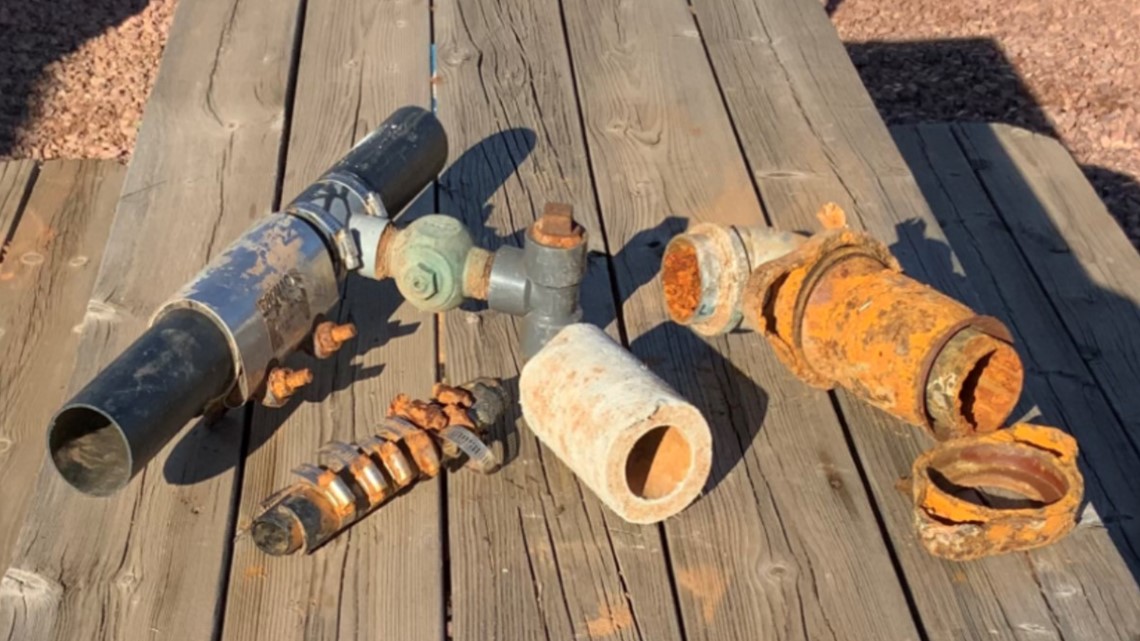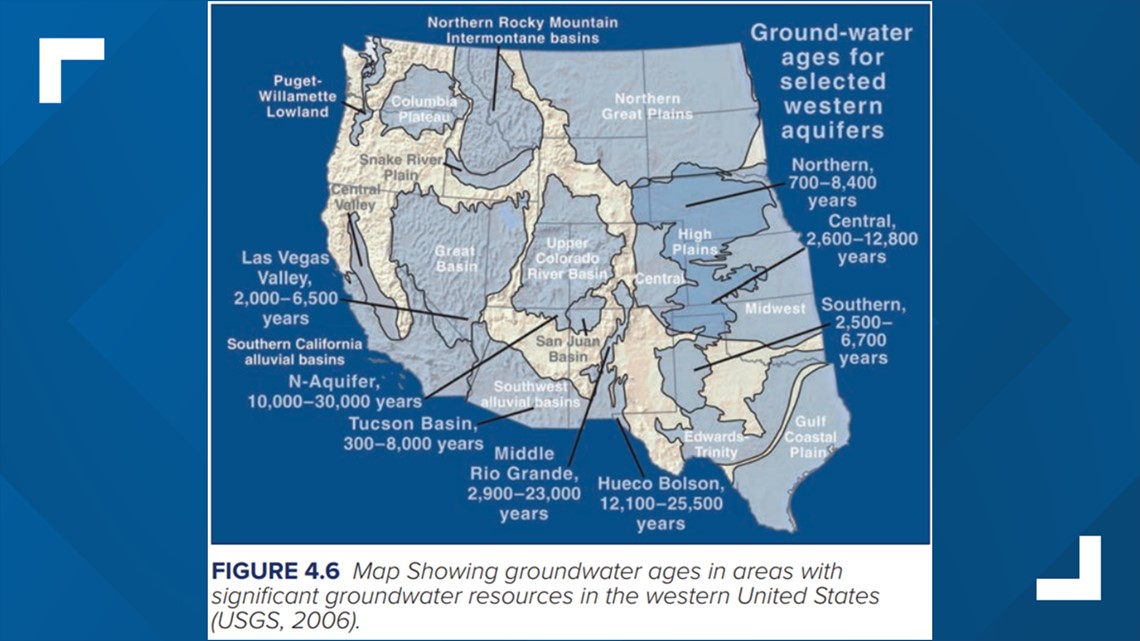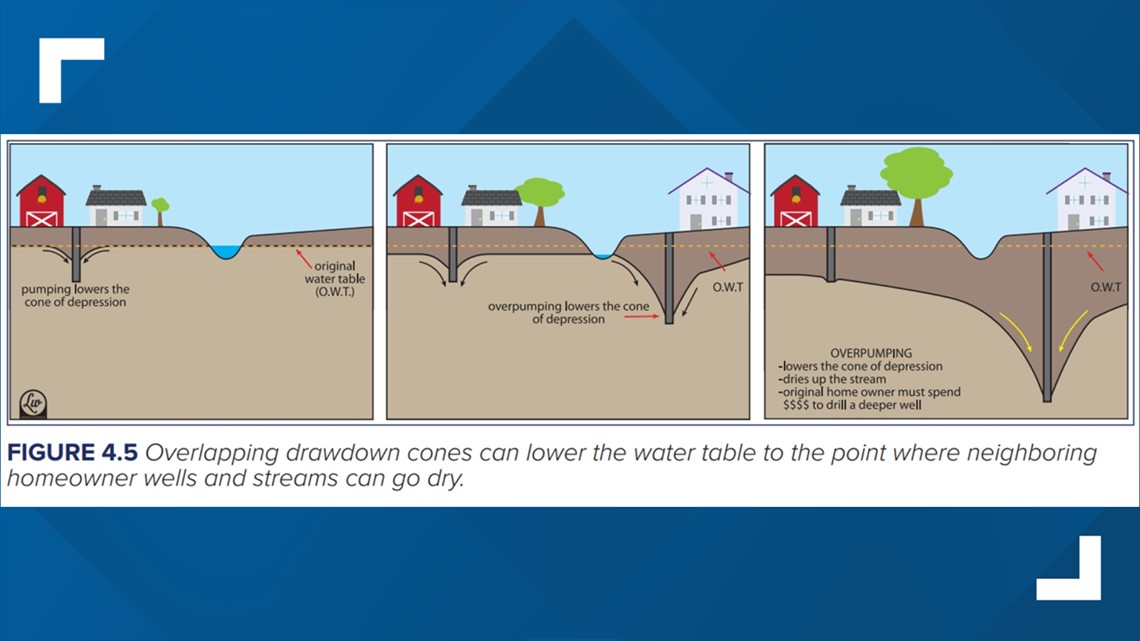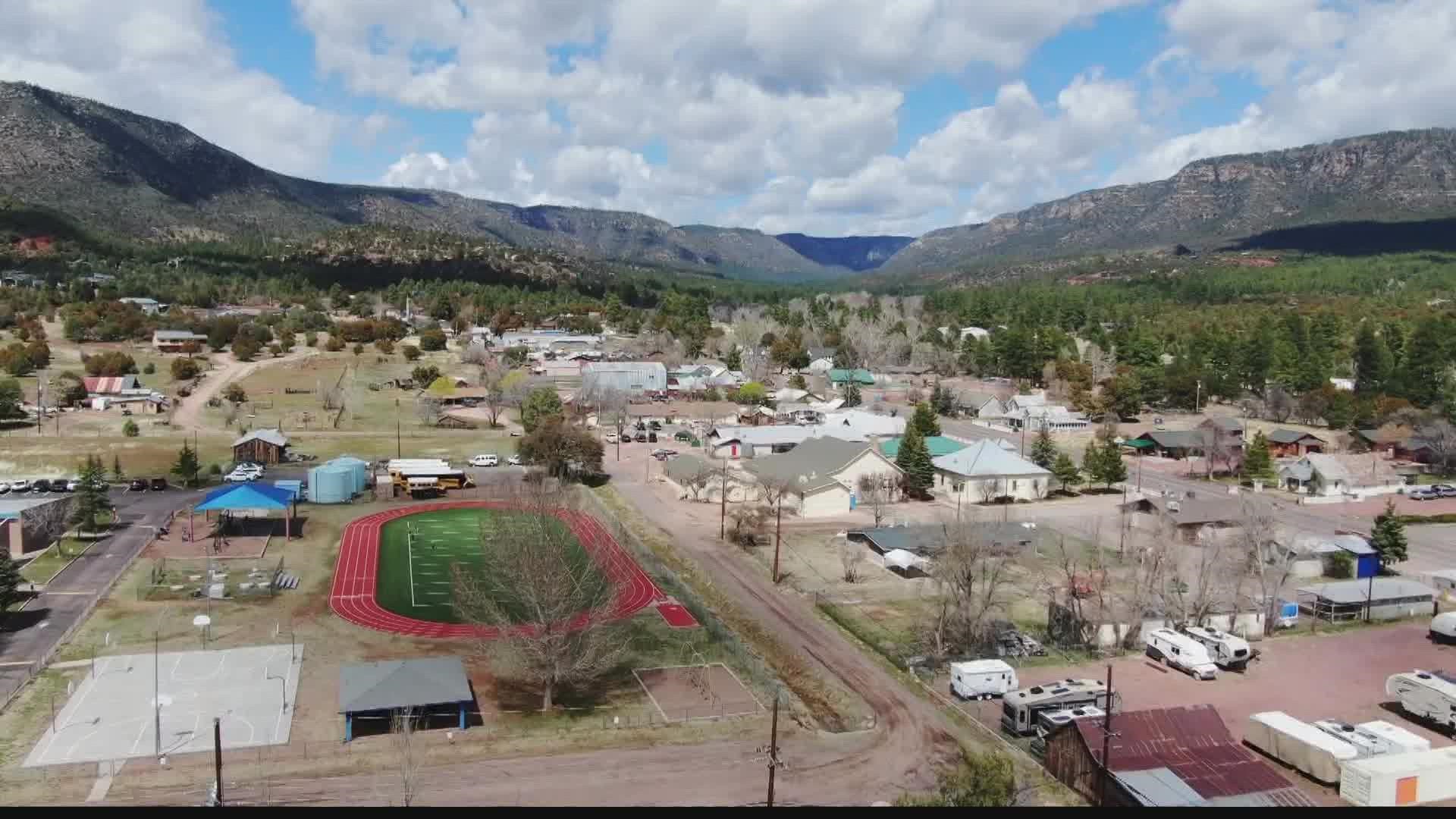PINE, Arizona — Wealth, in one way or another, was the main reason modern communities sprouted up in Arizona's High Country.
Gold found in the multicolored hills of the Bradshaw Mountains caused the area's European population to boom in the 1860s, attracting prospectors with dreams of riches.
The natural wealth of rich soil, towering pines and an abundance of water offered in the area that would become Pine-Strawberry offered different riches to people who ventured out of the mines, according to the community's historical society.
Both kinds of wealth continue to draw people today to both live and vacation in Pine-Strawberry. But, increased development is threatening the community's most precious resource: water.
The town's largest water supplier has seen more than half of its wells dry up, going from nearly 40 active wells to 14.
The situation has become so dire that residents are meeting with Sen. Mark Kelly's team to try and secure funding for potential solutions.
The main solution being purposed by town leaders, however, will only make matters worse, according to one of the state's leading hydrologists.


Dry wells, 60-year-old pipes hitting a tipping point
The few wells that the Pine Strawberry Water Improvement District (PSWID) has left are strained. The district supplies water for 8,000 people, including more than 5,000 part-time residents and tourists.
There are around 100 private wells also in the community either used by companies or by individual residents, but PSWID's Director David Dickinson said many of those wells have also dried up.
"It's just too many straws in the glass," Dickinson said. "That's why a lot of folks are running dry. The way the [water well] rules are written right now, anybody can build a well, and that's kind of the problem."
Outdated infrastructure is another problem entirely.
The town's residents are sitting on a miles-long collection of old, poorly installed water pipes that mostly haven't been updated since the 1960s.
Maps provided by the district show the vast majority of the water piping needs to be replaced. The community has no funding to do so.
"Back in the 60s and 70s, developers just went the cheapest route they could," Dickinson said. "They just put these pipes in and put rocks on top of it. 80% of our current operations budget is going towards just putting band-aids on this stuff until we can get funding to replace it."
The consequence of this mentality is a "hodge-podge" of separate stand-alone systems of wells, piping, pumps, booster stations and storage tanks put in the ground under Pine-Strawberry.
Wells and piping are the immediate concern of community leaders, but there's a deeper issue under the surface.
"They're in overdraft": Where Pine-Strawberry's water is (not) coming from
Pine-Strawberry's wells pull water from two aquifers, or underground areas where water has become trapped. One aquifer is shallow while the other is deeper below the earth.
Aquifers can be thought of as water bank accounts, according to Kristine Uhlman, one of Arizona's top hydrologists. You can put in and take out money from a bank account, and you can put in and take out water from an aquifer.
"If you take out too much water, you're going to be in overdraft, meaning you're taking out more than is being put in," said Uhlman, who literally wrote the book on Arizona water well ownership.
Pine-Strawberry is absolutely in overdraft. The shallow aquifer that the majority of people use has dropped 57 feet in the past ~45 years, according to PSWID.
Uhlman almost fell out of her chair when she heard this.
"That's pretty dire," Uhlman said. "That's definitely overdraft."
If that aquifer was actually a bank account, the bank would have closed the town's account long ago and would have probably taken legal action against it.
Living in an arid climate with little to no rainfall doesn't help matters.
The vast majority of water in aquifers across Arizona can be described as "old money." On average, Arizona aquifer water is around 10,000 years old, which means the last time the aquifers were replenished was during the last ice age.
"If you were to drink from a water fountain at the University of Arizona, that water has been measured at 10,000 years old," Uhlman said. "I like to imagine that water was rolling off the back of a woolly mammoth."
Even if Arizona wasn't currently facing a megadrought, the amount of water Pine-Strawberry is using wouldn't be replenished for years.


RELATED: 'The nature of the beast': The numerous ways Arizona's megadrought will affect people's health
The town's proposed solution may make matters worse
The water district and community residents will be meeting with Mark Kelly's team on Thursday to go over the issues and possible sources of funding.
The top priority of the meeting is to get new, deeper wells to sidestep the issue of "too many straws" being in the shallow aquifer, according to a presentation obtained by 12 News.
The new wells would cost around $2.2 million each to create.
"Our highest priority now is more deep wells, and we're trying to get funding for that," Dickinson said. "The deeper aquifer...is a more reliable source than the shallow aquifer that everyone has their straw in."
Uhlman completely disagrees. She says that drilling deeper wells would not only prolong the problem, but could also backfire and make the problem worse.
"If you drill deeper, and pump deeper, the shallower well will go dry faster," Uhlman said.


Deep wells drilling into the earth push layers of earth down with it, forming what's called a "drawdown cone." These cones often lower the "water table", or the surface of an aquifer.
If PSWID goes through with drilling deeper wells, it would push the shallow aquifer's water table below the point where older, cheaper wells would be able to reach.
"A deeper well would be an answer for people who have the money, but it will be extremely detrimental to those who have been there with their shallower wells for a long time," Ulhman said. "They have to realize that these wells will be negatively impacting their neighbors. Going deeper is no guarantee."
Other reasons she offered against drilling deeper wells were lessening of water quality, exposure to hazardous chemicals, and increasing the possibility of deeper aquifers closing up due to drilling.
She recommended the district focus more on conservation rather than new water well creation. The decision ultimately falls on the community members of Pine-Strawberry and the possible funding made available by federal and state agencies.
Residents also asked this question during a community meeting with Kelly's team. The district told residents that if they find a new well is affecting community wells, they would shut it down.
If the district is worried about having "too many straws" in the cup, the science seems to say building deeper wells would only puncture a hole in the bottom of the cup, spilling all the water on the ground.
Read the full UArizona and AZDHS Well Owner's Guide here:

